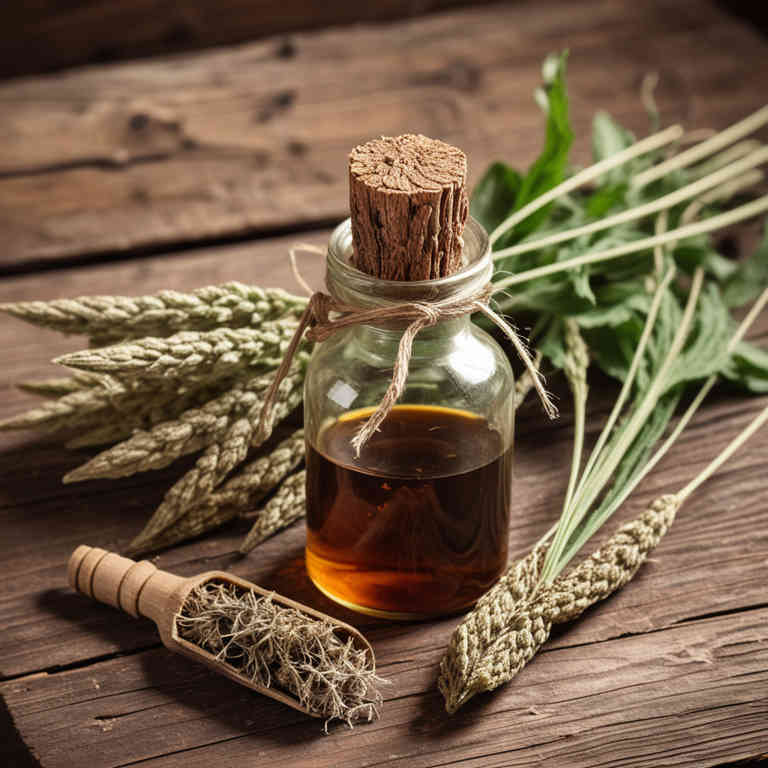Plantago lanceolata tincture for medicinal use

Plantago lanceolata tincture is a concentrated herbal preparation made from the leaves of the plant commonly known as broadleaf plantain.
This tincture is typically prepared by soaking the dried leaves in alcohol to extract their medicinal properties. In herbalism, it is valued for its anti-inflammatory, astringent, and wound-healing properties. It is often used to treat minor skin irritations, insect bites, and digestive issues.
The tincture is also believed to support respiratory health and can be taken internally or applied topically depending on the condition being addressed.
Uses
Plantago lanceolata tincture has been used to treat a variety of ailments throughout history, with roots in traditional medicine systems such as Ayurveda and Chinese herbalism.
Historically, it was valued for its soothing properties and was used to alleviate respiratory issues, skin irritations, and digestive discomfort. In modern times, the tincture is commonly utilized for its anti-inflammatory and wound-healing benefits, often applied topically for minor injuries or ingested to support gastrointestinal health. It is also gaining popularity as a natural remedy for reducing inflammation and boosting immune function.
Due to its versatility and long-standing reputation, Plantago lanceolata tincture remains a respected preparation in both traditional and contemporary herbal practices.
Benefits
Plantago lanceolata tincture has health benefits such as reducing inflammation, supporting respiratory health, and promoting skin healing.
It is commonly used to alleviate symptoms of coughs, bronchitis, and asthma due to its expectorant and anti-inflammatory properties. The tincture may also aid in digestive health by soothing irritated mucous membranes in the gastrointestinal tract. Additionally, it has been traditionally used to treat wounds, eczema, and other skin conditions because of its antimicrobial and healing properties.
Overall, Plantago lanceolata tincture is valued for its wide range of therapeutic applications in herbal medicine.
Constituents
Plantago lanceolata tincture active constituents include mucilage, polysaccharides, flavonoids, and alkaloids.
These compounds contribute to its traditional use in supporting digestive and respiratory health. Mucilage and polysaccharides help soothe irritated tissues and promote healing. Flavonoids provide antioxidant properties that may reduce inflammation.
Alkaloids are believed to enhance the plant's overall therapeutic effects.
Preparation
To make Plantago lanceolata tincture, first gather fresh or dried Plantago lanceolata leaves and rinse them thoroughly.
Next, place the leaves in a clean glass jar and cover them completely with high-proof alcohol, such as vodka or grain alcohol. Let the mixture sit in a dark place for 4 to 6 weeks, shaking the jar gently every few days. After the steeping period, strain the liquid through a cheesecloth or fine mesh strainer to remove the plant material.
Finally, store the tincture in a dark glass bottle in a cool, dry place, and label it with the date and contents for future reference.
Side Effects
Plantago lanceolata tincture may lead to gastrointestinal discomfort, including nausea, vomiting, and diarrhea, particularly with high doses or prolonged use.
It can also cause allergic reactions in individuals sensitive to the plant, manifesting as skin rashes, itching, or respiratory symptoms. Long-term use might interfere with blood sugar levels, making it potentially risky for people with diabetes. There is also a possibility of liver toxicity with excessive consumption, though this is rare.
As with any herbal remedy, it is important to consult a healthcare professional before use, especially for those with pre-existing medical conditions or taking other medications.